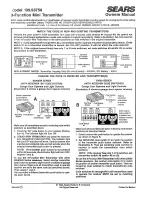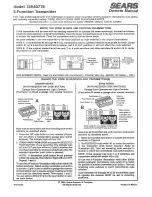
Operational Theory
Insta-Trans
Teledyne Analytical Instruments
6
between a battery and a true fuel cell. (All of the reactants are stored
externally in a true fuel cell.)
2.2.2 Anatomy of a Micro-fuel Cell
The Micro-fuel Cell is a cylinder only 1¼ inches in diameter and
1¼ inches thick. It is made of an extremely inert plastic, which can be
placed confidently in practically any environment or sample stream. It is
effectively sealed, although one end is permeable to oxygen in the
sample gas. The other end of the cell is a contact plate consisting of two
concentric foil rings. The rings mate with spring-loaded contacts in the
sensor block assembly and provide the electrical connection to the rest
of the analyzer. Figure 2-1 illustrates the external features.
Figure 2-1: Micro-fuel Cell
Refer to Figure 2-2,
Cross Section of a Micro-fuel Cell
, which
illustrates the following internal description.
At the top end of the cell is a diffusion membrane of Teflon,
whose thickness is very accurately controlled. Beneath the diffusion
membrane lies the oxygen sensing element—the cathode—with a
surface area almost 4 cm
2
. The cathode has many perforations to ensure
sufficient wetting of the upper surface with electrolyte, and it is plated
with an inert metal.
The anode structure is below the cathode. It is made of lead and has
a proprietary design which is meant to maximize the amount of metal
available for chemical reaction.















































